This range of multisensory resources offer engaging ways to support and encourage pre-reading skills. Children will want to get hands-on with letters and their sounds as they explore these tactile resources, interactive apps.
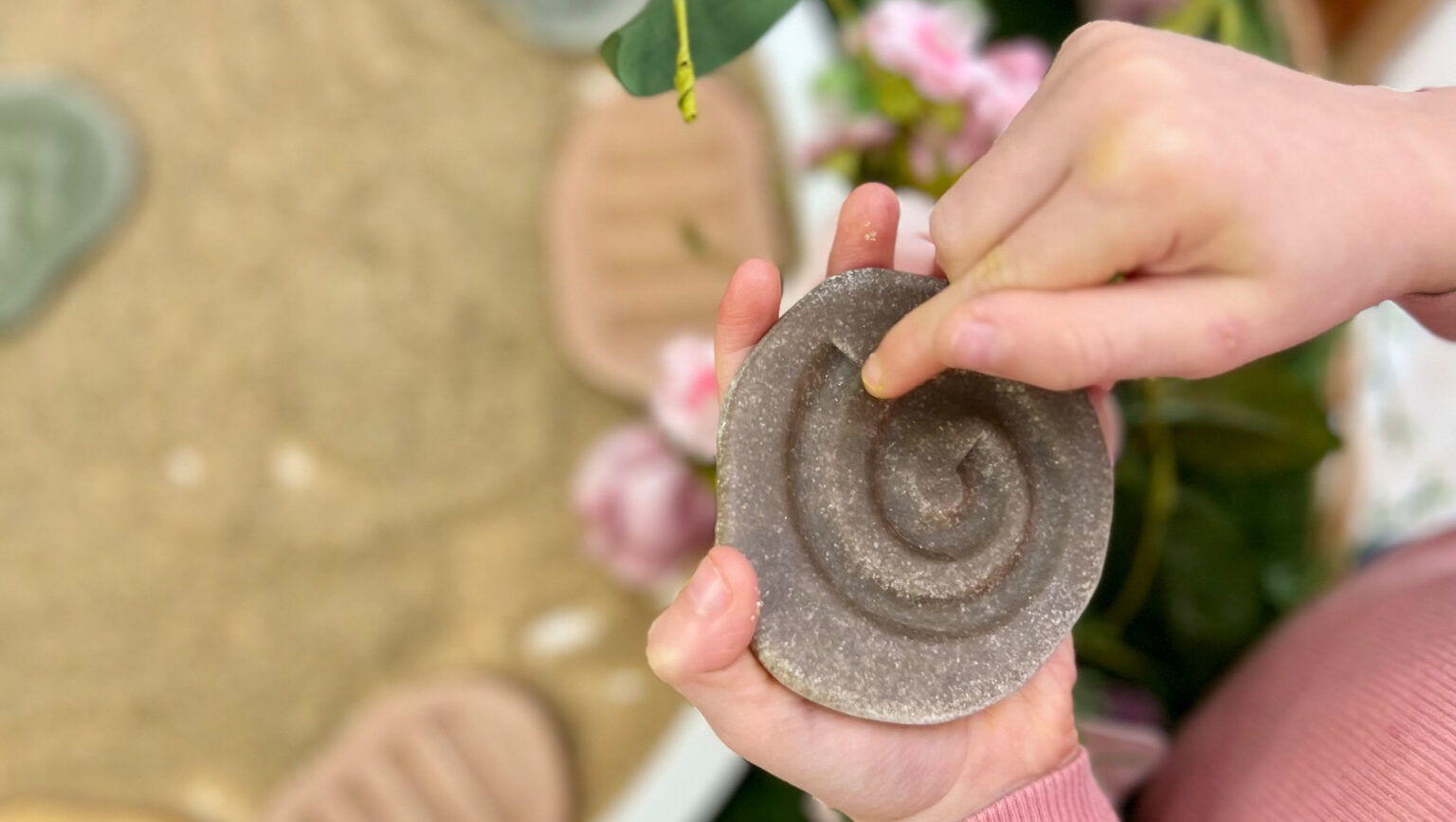
Feels-Write Pre-Writing Stones
Before young children can acquire a fluent and comfortable handwriting style they need to develop fine-motor control, the language to talk about shapes and patterns, and the handwriting movements needed for the basic letter shapes.
These beautiful stones offer a tactile and visual way of introducing young children to letter formation.
Activity idea:
Starting at the green dot, children will enjoy tracing each letter shape with their finger building important motor-memory skills. Encourage your child to recreate the patterns in sand, soil, or play dough.
Phonics Pebbles
This set of pebbles includes the 44 most common phonemes (small units of sound), plus some pebbles that display alternative spellings. The pebbles can be used to blend sounds to make words and segment words to understand their constituent parts. They are durable enough be used outside and in sand, soil or water.
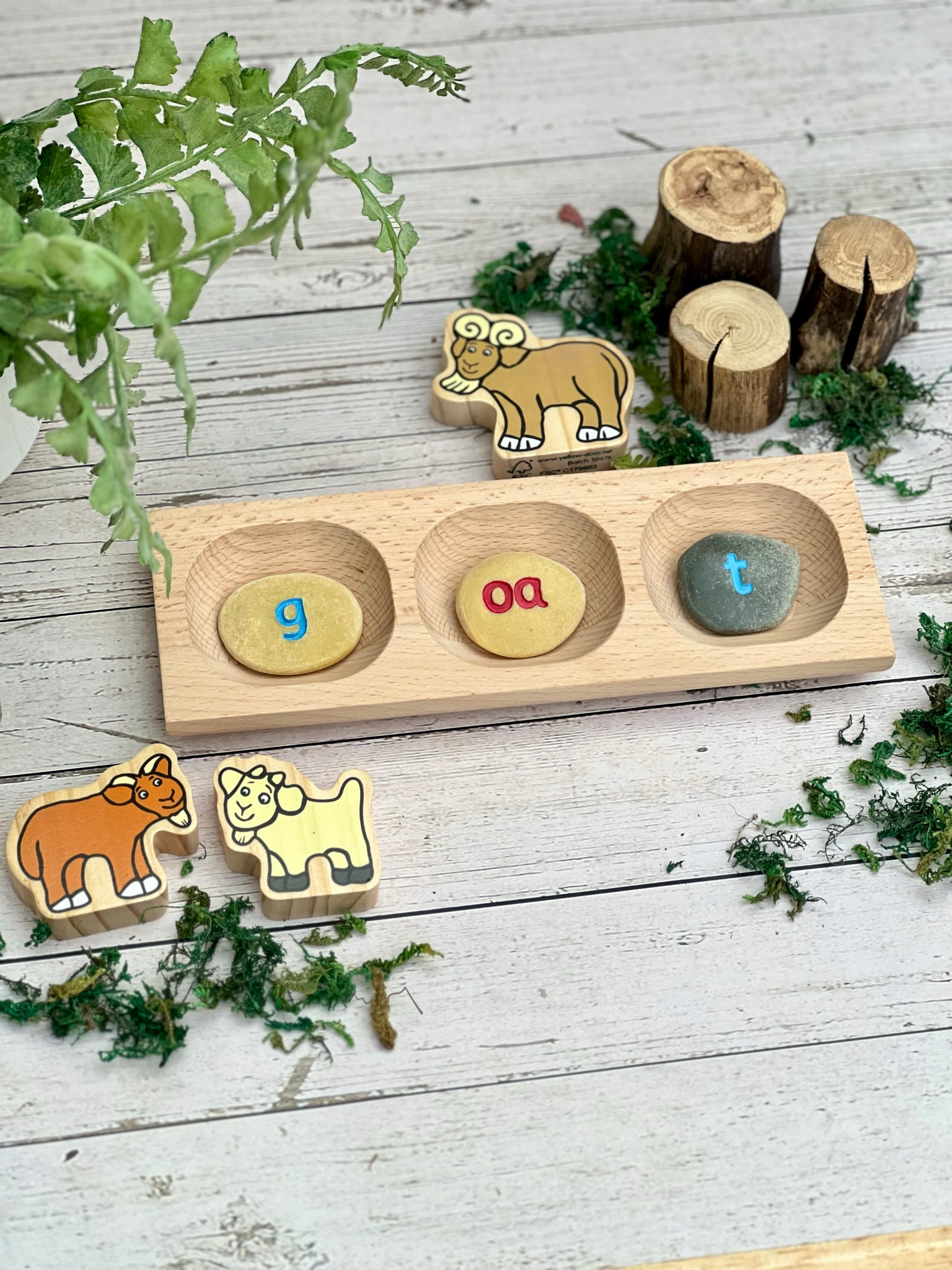
Activity idea:
Show your children a collection of objects containing the phonemes you have decided to focus on. As you put each item into a bag, say its name, emphasising the focus phoneme. Show your child the corresponding pebble each time and put these on a tray. Ask your child to take an object out of the bag, say its name and match its initial, end or middle sound with the correct pebble on the tray.
4-Pebble Word-building tray
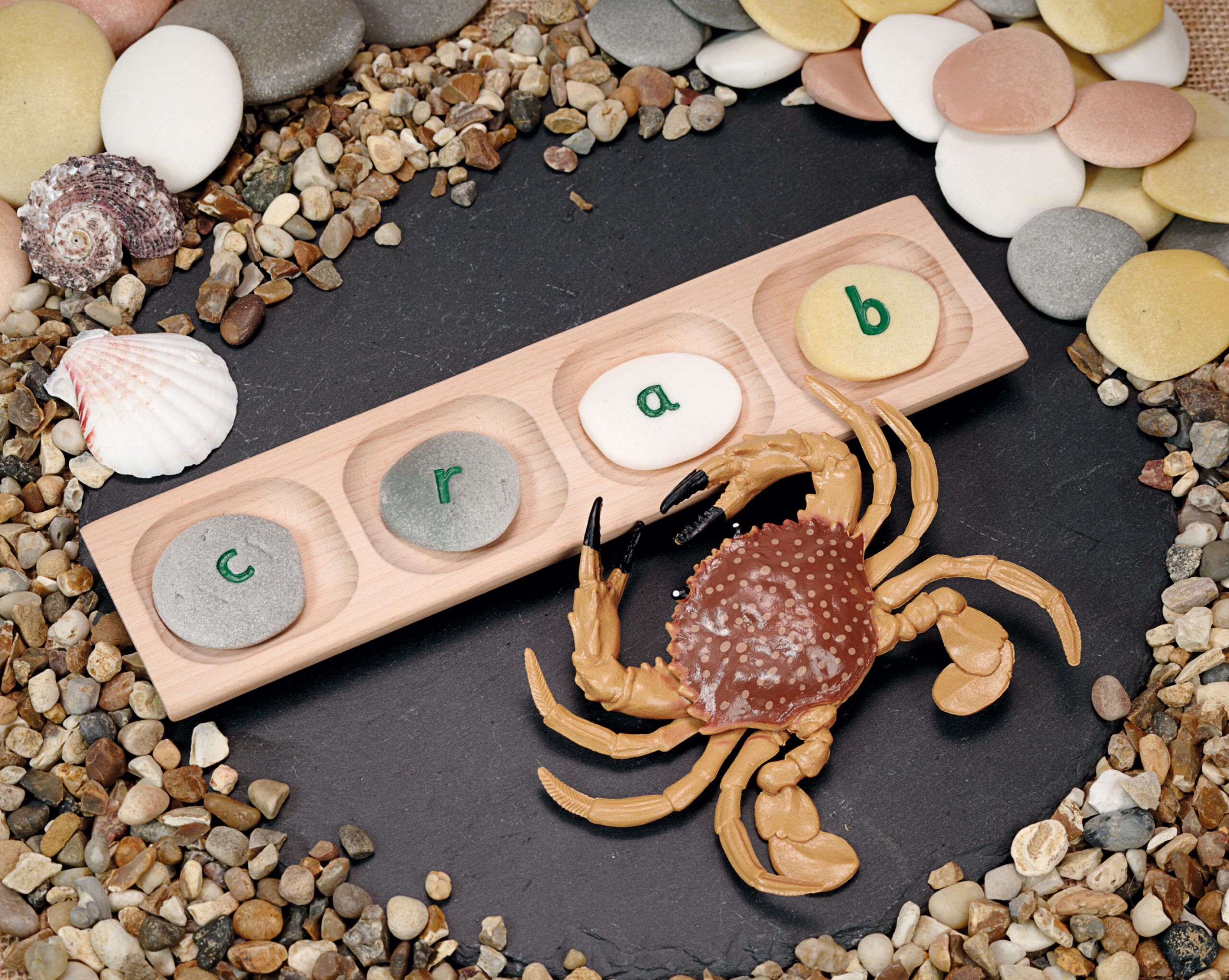
This tray has been designed to accommodate our alphabet and phonics pebbles, making it easier for children to lay out letters to form words. Its use grows as a child’s language proficiency increases. Begin by using the first three spaces to place letters in to create CVC words. As they are created, the child can blend the sounds by saying them out loud. Building on this work, use all the tray’s spaces to create CCVC, CVCC and CVVC words.
Activity idea:
Choose a selection of objects containing the focus phonemes and hide them in a bag. Feel for one object and orally segment its name. Ask your child to blend the phonemes and say the word. If they are correct, show them the object. Segment the word again, this time asking your child to help you find the phonics pebble or a similar representation of the sound from a selection. Build the word on the word-building tray, emphasising left to right directionality.
CVC Word Builder App
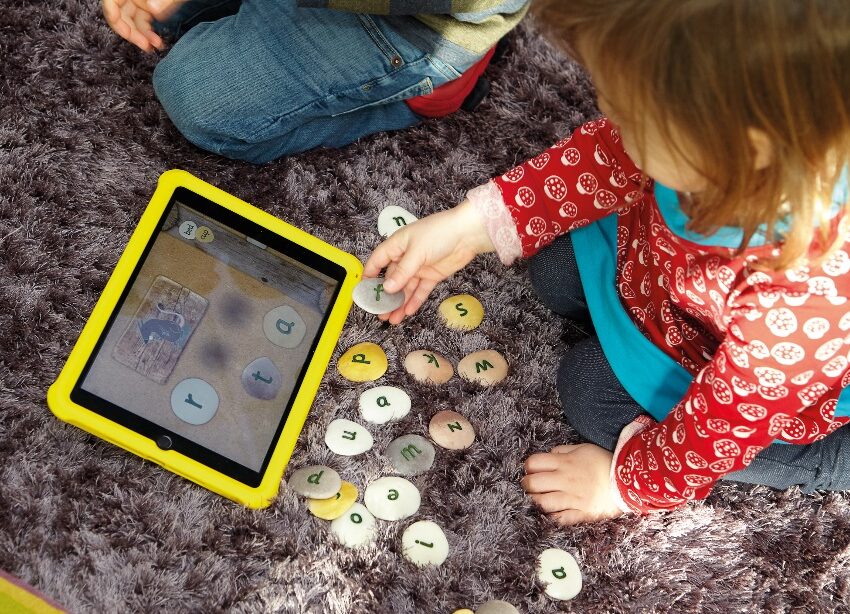
This app helps children to apply their phonological awareness using a digital device, either alongside our letter sets or independently. By using the structured games children will gain confidence in their abilities, learn how to apply their skills in different contexts and refine their understanding. Play the virtual game, then take the ‘real’ pebbles out to the sandpit or water tray!
Activity idea:
Our word-building set of pebbles can be used alongside this app. When reading a book with your child, pause and explore the sounds that create consonant-vowel-consonant words (CVC) and build them using these pebbles or other representations of letters.
Rhyming Pebbles and Find the Rhyme App
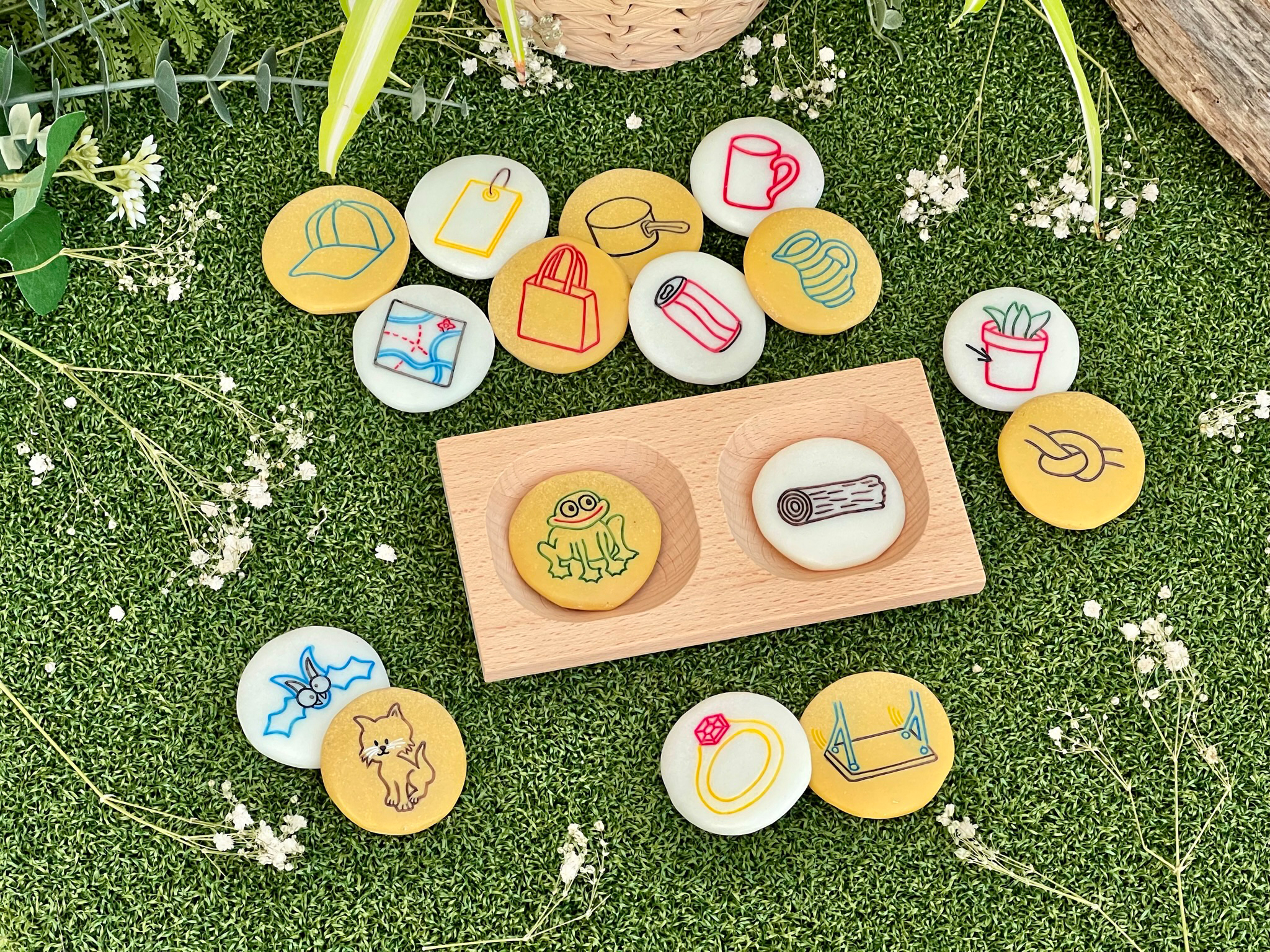
This set of pebbles made up of eight rhyming pairs will help with your child’s understanding of sounds, and can be used in conjunction with or separately from our Find the Rhyme app, which uses a greater number of rhyming pairs.
Activity idea:
Collect a selection of objects, pictures and photographs that relate to a rhyming pebble family, for example: bag, flag, rag and tag for ‘-ag’. Hide these indoors and/or outside. Give your child a rhyming pebble that relates to one of the groups of hidden items. Send them off to see what they can find. Use a sand timer if you want to add some urgency to the game. At the end of the game, talk about what your child has found.
